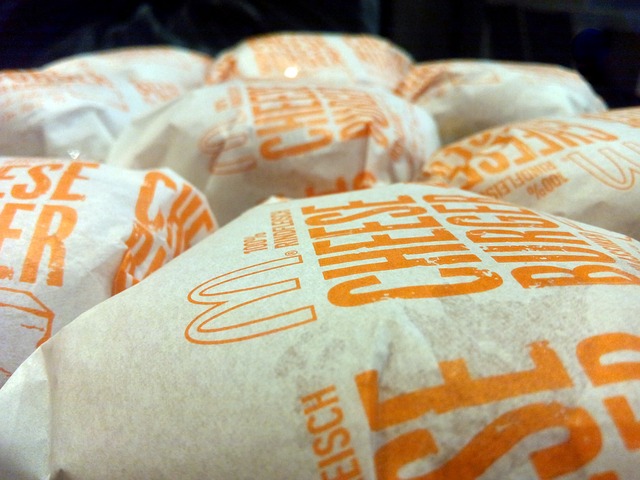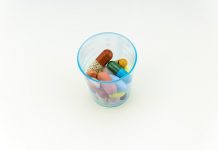According to new study, food industry self-regulation has been unsuccessful and has achieved only baby steps in improving nutritional quality of foods advertised to kids.

Children are exposed to a considerable amount of televised food advertising: more than six ads accounting for about 2:21 minutes per hour during typical programming.
Concerns about the role of televised food advertising as a contributor to childhood obesity led to the food industry adopting of a program of self-regulation.
A new study published in the American Journal of Preventive Medicine evaluated the effectiveness of industry self-regulation and found that this program has achieved little improvement in the nutritional quality of foods advertised to children.
The study found that four of every five foods advertised to children (80.5%) are classified in the poorest nutritional category, according to US Department of Health and Human Services guidelines.
According to lead investigator Dale Kunkel, PhD, Department of Communication, University of Arizona, Tucson, “The long-standing pattern favoring nutritionally deficient food products over more-healthy items clearly persisted despite the advent of industry self-regulation. This outcome occurred largely because participants in self-regulation achieved no significant improvement in the nutritional quality of their advertised foods between 2007 and 2013.”
Continue Reading Below ↓↓↓
A 2006 report from the Institute of Medicine warned that unhealthy food advertising puts children’s health at risk. This report triggered a public debate that resulted in the formation of the Children’s Food and Beverage Advertising Initiative (CFBAI), a self-regulatory program that included 17 of the nation’s largest food companies.
The participants promised that child-directed ads would feature only healthier foods that meet nutritional standards specified by each company. For example, the Kellogg Company pledged that all child-targeted advertising will contain a maximum per serving of 200 calories, 2 g saturated fat/0 g trans fat, 230 mg sodium, and 12 g added sugar.
Dr. Kunkel and colleagues’ evaluation of the efficacy of industry self-regulation resulted in two highly dissonant findings.
First, CFBAI-participating companies have completely fulfilled all specified commitments by advertising only products that meet nutritional guidelines stipulated by their parent corporations and have used licensed characters solely in advertising for products that comply with their parent corporations’ guidelines for healthier products. The industry has done everything it promised.
However, the second finding revealed that the nutritional standards employed by companies participating in the CFBAI do not necessarily reflect high benchmarks. Many companies classify a product as healthy if a small portion of the undesirable ingredients is removed from its original formulation.
This consideration accounts for the disparity between industry claims that companies promote only healthier foods to children, and the study’s finding that the majority of products advertised by CFBAI participants fall in the poorest nutritional category. “Deficiency in the nutritional standards employed by industry self-regulation has already been recognized as a critical shortcoming,” explained Dr. Kunkel.
The researchers compared a sample of child-targeted food ads aired in 2007 (before CFBAI) with an equivalent sample of 2013 food advertising (after CFBAI). Over a period of 10 weeks, one episode of each regularly scheduled children’s program that aired between 7:00 AM and 10:00 PM was recorded and analyzed.
The programs were carried on five broadcast networks (ABC, CBS, Fox, NBC, CW) and two cable networks (Cartoon Network, Nickelodeon) that deliver large volumes of children’s programming. The 2007 sample included 145 shows, representing 73.5 hours of programming. The 2013 sample consisted of 103 shows and 55.0 hours of content.
In this study, the advertised products were categorized according to a rating system devised by the Department of Health and Human Services, which differentiates three types of products: Go, Slow, and Whoa. Go foods are rich in nutrients and low in calories, fat, and added sugar, such as vegetables, fruits, whole grain breads/cereals, low-fat yogurt, nonfat milk, and diet soda.
Slow foods are higher in fat, added sugar, and calories. Examples include broiled hamburgers, nuts or peanut butter, waffles, most pastas, 100% juice, and 2% low-fat milk. Whoa foods are high in calories, fat, and added sugar, and are low in nutrients. Examples include fried chicken, hamburgers, cookies, ice cream, whole milk, and regular soda.
Continue Reading Below ↓↓↓
When using the Go, Slow, Whoa methodology, 79.4% of food ads in 2007 were for Whoa products, which in fact increased to 80.5% in 2013. There was also little change for Slow products, at 16.5% of all food ads in 2007 and 18.4% in 2013. Ads for truly health Go products were so rare that no statistical comparisons could be made.
Another factor in the lack of improvement in food advertising to children is that approximately 30% of the ads were from companies that did not participate in industry self-regulation, with the two most prominent being Chuck E. Cheese (pizza) and Topps Company (candy), which accounted for 14.7% and 9.0% of all food ads, respectively.
“In the face of pleas for advertising reform, the food industry has achieved what might be labeled as baby steps,” stated Dr. Kunkel. “Indeed, this study demonstrates that no significant decline in the proportion of food ads devoted to unhealthy Whoa products occurred as a result of self-regulation, even among CFBAI participants. Given that corporate profit concerns unavoidably mitigate more-stringent industry-based reforms, continued reliance upon self-regulation to resolve this problem seems destined to yield only modest benefits. With a persistent national obesity crisis, the failure to act more strongly holds adverse implications for America’s children. As the IOM suggested in 2006, governmental restrictions on advertising practices will likely be required to end the predominance of unhealthy products in child-targeted food marketing. Such steps are increasingly being pursued by countries worldwide.”
Source: Elsevier Health Sciences
Journal: American Journal of Preventive Medicine











